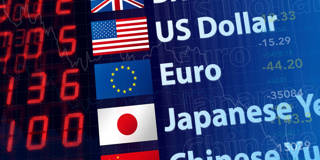Almost immediately after the COVID-19 outbreak began in the US, the Federal Reserve began pumping dollars into the economy. As the aftermath of the 2008 global financial crisis showed, this will leave many central banks with little choice but to pursue their own monetary expansion.
NEW HAVEN – As the COVID-19 pandemic drives the global economy into recession, the temptation to pursue aggressive monetary easing is growing. Already, the US Federal Reserve has pushed interest rates near zero and committed to pump trillions of dollars into the economy. The European Central Bank has also ramped up bond purchases, though Germany’s constitutional court is mounting some resistance. Like the easing that followed the 2008 financial crisis, such policies will reverberate worldwide via exchange-rate fluctuations.
On their own, major economic shocks, such as natural disasters or disease outbreaks, tend to drive up the value of the affected countries’ currencies. When the Kobe earthquake struck Japan in 1995, the yen appreciated against the US dollar, albeit not immediately. The 2011 Great Northeast Earthquake had a stronger effect, driving the yen to an historical high of ¥76 to the dollar.
What explains this post-disaster boost to a currency’s value? Exchange rates reflect relative demand for currencies in the world market. And demand depends partly on supply: if there are far more dollar assets than yen assets on the world market, the scarcer yen will gain value. Rising demand for the yen will compound this effect.

NEW HAVEN – As the COVID-19 pandemic drives the global economy into recession, the temptation to pursue aggressive monetary easing is growing. Already, the US Federal Reserve has pushed interest rates near zero and committed to pump trillions of dollars into the economy. The European Central Bank has also ramped up bond purchases, though Germany’s constitutional court is mounting some resistance. Like the easing that followed the 2008 financial crisis, such policies will reverberate worldwide via exchange-rate fluctuations.
On their own, major economic shocks, such as natural disasters or disease outbreaks, tend to drive up the value of the affected countries’ currencies. When the Kobe earthquake struck Japan in 1995, the yen appreciated against the US dollar, albeit not immediately. The 2011 Great Northeast Earthquake had a stronger effect, driving the yen to an historical high of ¥76 to the dollar.
What explains this post-disaster boost to a currency’s value? Exchange rates reflect relative demand for currencies in the world market. And demand depends partly on supply: if there are far more dollar assets than yen assets on the world market, the scarcer yen will gain value. Rising demand for the yen will compound this effect.